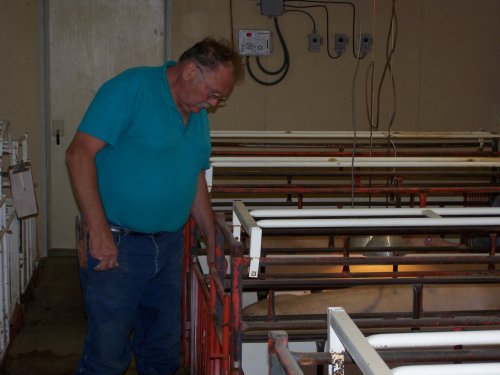Number of COVID-19 Cases Continues To Rise
(Des Moines) — Iowa Governor Kim Reynolds released the latest numbers with the COVID-19 coronavirus during her Monday morning news briefing. Iowa now has another 113 positive cases for a total of 1,710. Reynolds says the virus
has now been detected in 82 of Iowa’s 99 counties, with the latest confirmation taking place in Cass County. The governor says 16,986 people have tested negative with an additional 981 negative tests added to the sum. She reports the state laboratories have 3,565 tests available. 142 people
are presently hospitalized with the coronavirus, but 741 have recovered for a 43 percent of recovery. Iowa now has 43 deaths associated with COVID-19 with the latest victims from Linn and Muscatine counties. Reynolds says of the 1,710 positive cases, about ten percent represent either medical staff personnel or employees at long-term care facilities. Reynolds also
gave an update as to the number of cases in each of the regions, including northwest Iowa.
Public Health Department And University Of Iowa Trying To Reach Agreement On Creating A Model For COVID-19 Outbreak And Spread
IOWA CITY, Iowa (AP) – Experts working to develop models to help Iowa public health officials predict and manage the coronavirus pandemic are racing against time. A contract shows the Iowa Department of Public Health and the University of Iowa College of Public Health didn’t reach a formal agreement to work together to create Iowa-specific pandemic models until April 7. The agreement calls for the college to produce predictive models within two weeks of receiving the department’s coronavirus data, or on another mutually agreed upon schedule. The goal of the models is to help Iowa public health officials and Gov. Kim Reynolds predict the severity of the outbreak and make decisions about specific mitigation strategies.
More Than Half Of Iowa Deaths From COVID-19 Were Residents Living In Nursing Care Long-term Facilities
(Des Moines) — Governor Kim Reynolds on Monday reported 43 Iowans have died of COVID-19 so far this spring and 53 percent of those who’ve died of the virus were residents of a nursing home.
There are 444 long-term care facilities in Iowa. State officials have confirmed COVID-19 outbreaks at nursing homes in Washington, Toledo and Cedar Rapids. The governor says new machines that can produce testing results in as little as five minutes are being sent to some of the nursing homes.
The governor issued an order in March that requires nursing home staff to undergo health care screening and have their temperatures taken at the start and end of each shift. Reynolds is thanking nursing home employees for their work.
Reynolds today was asked about potential COVID-19 outbreaks at meat packing plants in Tama and Louisa Counties. She indicated a machine has been sent to one of the plants, but she did not specify which one.
The latest state report indicates 79 cases of COVID-19 have been confirmed in Louisa County. A WEEK AGO, managers of the Tyson plant in Louisa County announced more than two dozen workers had tested positive. Earlier this month, the beef packing plant in Tama temporarily suspended operations after one employee tested positive for COVID-19. Today’s (Monday’s) state report indicates 101 Tama County residents have tested positive for the virus. State officials have identified a COVID-19 outbreak at the Premier Estates nursing home in Toledo, which is in Tama County, but the number of cases associated with the facility has not been made public.
Agricultural Economist Predicts Hog Prices To Fall For Pork Producers
(Le Mars) — With the closing of both the Tyson Foods plant at Columbus Junction, Iowa; and more recently, the Smithfield plant in Sioux Falls, South Dakota due to the COVID-19 coronavirus, additional pressure is being placed on pork producers. Lee Schulz is an agricultural economist with Iowa State University Extension and Outreach with a focus on livestock marketing.
Schulz says pork producers may see a drop in their prices, as a result of the interruption of processing.

Schulz says the nation had already been operating above a year ago processing level. He says cold storage has also been at a surplus. He says consumers may not see much change in the price of pork, however, supermarkets, grocery stores, and butcher shops may not feature any specials on pork products
heading into the spring.
The Iowa State University Agricultural Economist says with many restaurants having been forced to close, that has also had an impact on the pork demand.
Schulz says pork producers will soon find themselves without much capacity as they are forced to hang on to their hogs that are ready for market, for a longer duration, meanwhile new born pigs and piglets recently weaned will be coming to finishing barns with no space available.
Pork Producers Concerned With Current Situation Involving COVID-19
(Le Mars) — Calling it “a scary time”, pork producers like Bill Tentinger of Le Mars are deeply concerned as to what is happening in the pork industry with the spread of COVID-19 causing processing plants to shut down, and what
could be a long-term problem. Tentinger, a former president of the Iowa Pork Producers Association and current director with the National Pork Board says the Smithfield plant located at Sioux Falls represents a significant percentage of the pork processing capacity for northwest Iowa pork producers.
Tentinger says the food production system is a fine-tuned machine with everything falling into a specific schedule. He says any interruptions to the scheduled system creates havoc for producers and consumers, alike.
The Plymouth County pork producer says retail outlets may find it difficult to obtain pork products if they relied on either the Smithfield plant in Sioux Falls, or the Tyson Foods plant in Columbus Junction.
Tentinger says pork producers are scrambling trying to find suitable accommodations for either new pigs coming in, or for hogs ready for market, but are forced to wait. He says some pork producers may find themselves in a position where they may have to euthanize pigs because of the economy, or due to lack of barn space.








